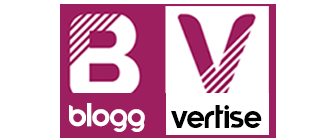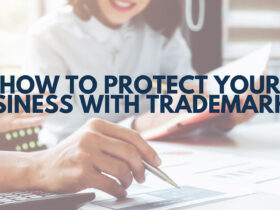The key to successfully serving your consumer base is product personalization. Your clients do not all desire the same thing or utilize your product in the same way. Therefore, product customization is necessary for providing a personalized customer experience to each user segment, and it can boost customer loyalty and satisfaction.
Your consumer base has varied desires and demands, regardless of whether you sell a genuine product or online software. It’s vital to remember that every one of your clients is unique while creating a product that appeals to as many people as possible. If you strive to appeal to everyone, you’ll appeal to no one, as the old adage says. Rather than being generically appropriate for your target market, you can tailor your product to meet the needs of each user segment.
The concept of a “one-size-fits-all” solution is no longer valid. Instead, customized products are becoming increasingly popular, ranging from tumblers to high-end purses. But what is it that makes people want to make their own products? How can ImprintNext Product Designer Tool help you achieve selling personalized products? Continue reading to see why your clients prefer personalized items and how you can capitalize on this trend.
1. Customers love Individuality:
Customization is a good business strategy because it makes customers happy, and happy customers are more likely to buy from you again. Deloitte discovered that one out of every five buyers is willing to pay 20% extra for a customized or unique product in retail. “Customization boosts perceived service quality, customer pleasure, customer trust, and ultimately consumer loyalty toward a service provider,” according to a 2012 study on customization.
The reason is that customization adds value to the customer’s experience. Customers who can personalize their experience gain value through exclusivities, such as a personalized, one-of-a-kind product, or specificity, such as a feature that functions the way they want it to.
2. Shoppers get the power to design what they buy:
The first step is to assess the nature of your items and determine whether or not they can be customized. You can do so by choosing whether there is a need for customizing the things you sell.
It would be beneficial if you chose whether you want to give your customers the ability to design or if you want to make some customizations yourself. If you choose the first option, you should consider your consumer demographics before choosing a solution. It will allow you to determine how comfortable your customers are with the customization process and what functionalities you should provide.
It’s critical to find a tool that’s both feature-rich and user-friendly if you want a flawless experience. Your users will appreciate the balance of functionality and user experience provided by the ImprintNext product design tool. In addition, they will be able to create incredible designs thanks to our extensive library of photos, clipart, and other resources, as well as our responsive UI, which will allow them to do so on any device.
Shoppers do not have complete freedom when it comes to customization. We understand the viability of your business and provide a custom user interface for you to govern where end-users can customize.
3. Product Customization Makes a Product Unique:
Customization is, without a doubt, an expensive endeavor. Offering numerous versions of the same product involves time and money. Your development team should set aside time to create new customization possibilities.
There’s also a higher danger factor because more customization entails greater complexity. It may appear in retail as if you are shipping the incorrect customized product. In software, bugs may appear when more and more distinct methods to utilize your product emerge, some of which you may not have ever considered testing.
All of this means that customization must be treated as any other feature in your product. Consider whether adding extra complexity to the product is worthwhile. Are users requesting what you’re planning to build? How long will it take to develop and maintain this feature? What else will this customization have an influence on? Will the extra personalization enhance or detract from the value of your current brand?
When it comes to customization, the most vital question to ask is, “Who are my customers?” and, more importantly, “what do they actually want?” The answers to this question will assist you in identifying areas where personalization can significantly improve client happiness and loyalty.
4. Unique Selling Proposition for Businesses:
You’ll probably agree that providing more excellent value to your customers is one approach to beat the competition. It is accomplished by providing users with unforgettable experiences. In addition, customers are satisfied and happier when they immerse themselves in designing a product for themselves.
They see a product or service with a unique feature created just for them. Customers will feel like they have your brand’s entire attention, allowing you to build long-term partnerships. Customer happiness and loyalty will be greatly affected by all of these factors.
Customized items for corporations, on the other hand, are costly. Creating bespoke choices costs effort and money. And not every instance of personalization will provide a beneficial result. For example, if there are too many difficulties in the process, customers may abandon it. So let’s look at what you should keep in mind when providing personalized products.
5. Increased Customer Loyalty:
Customization improves client perceptions of service quality, contentment, trust, and ultimately loyalty to a service provider.
Any firm that wants to thrive needs to keep its clients. A one-size-fits-all approach may not work for everyone because not all clients are the same and have distinct demands and needs. Customer loyalty and happiness can be increased when customers obtain the exact product they desire from your brand and have the flexibility to customize it themselves.
Customers are more likely to spend more with more personalization and loyalty, especially if your brand’s customization possibilities are different from your competitors.
6. Customization Boosts Satisfaction:
Allowing customers to personalize their experience is a brilliant strategy to differentiate yourself from the competition. After all, who better than the customer to know what they require?
Look for ways to provide clients with a unique and Personalized Products experience at every point of their journey. It becomes evident how each of your consumers’ wants differs after understanding the many types of clients who buy from you. As a result, you may increase consumer happiness and loyalty by catering to these distinct needs.
7. You can charge higher:
Offering partial or complete personalization of your items can help you stand out from the competition. It can also help you improve client satisfaction and recommendations through word of mouth.
Get your creative juices flowing and capitalize on an ever-growing trend to provide precisely what your customers desire.
Conclusion:
Physical store sales have been declining in recent years. It is partly due to competition from internet businesses, which do not have the same overheads as brick-and-mortar stores and can therefore provide cheaper products more conveniently.
Furthermore, faster, more responsive websites make it easier to access, compare, and buy things, whereas the buyer must always look for the best deal in physical stores.






Leave a Reply